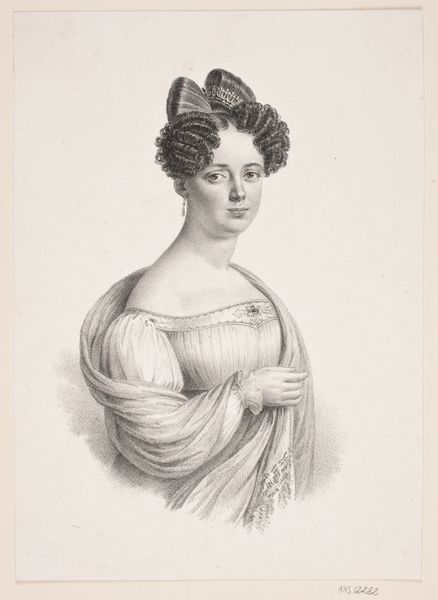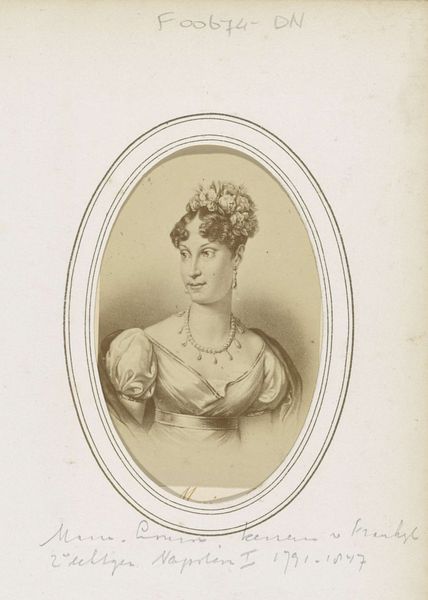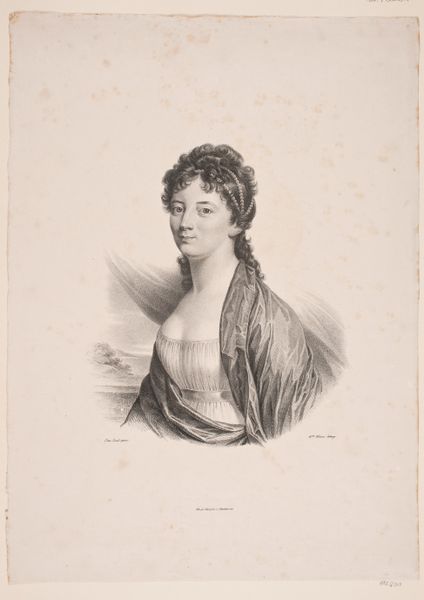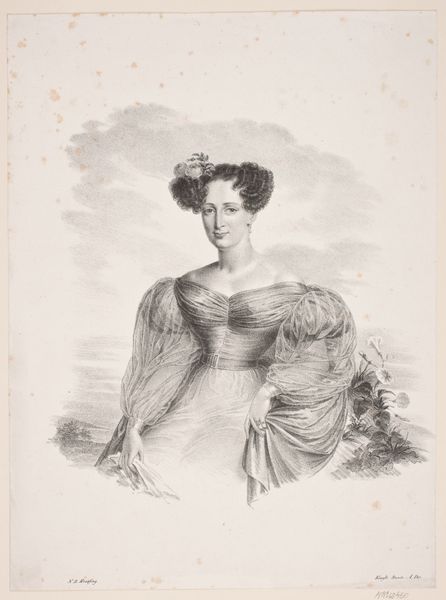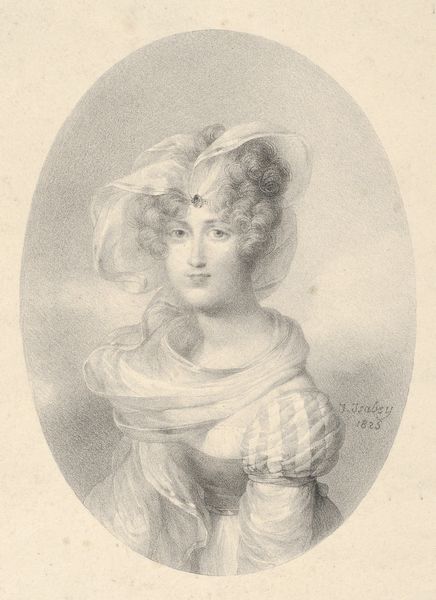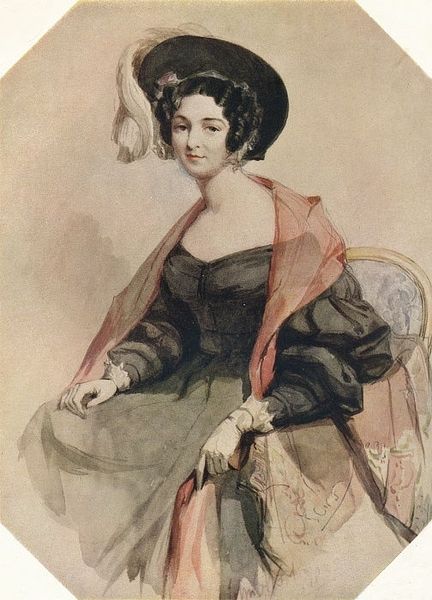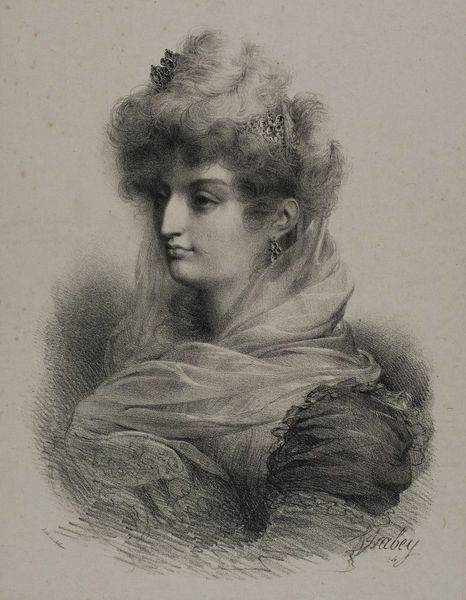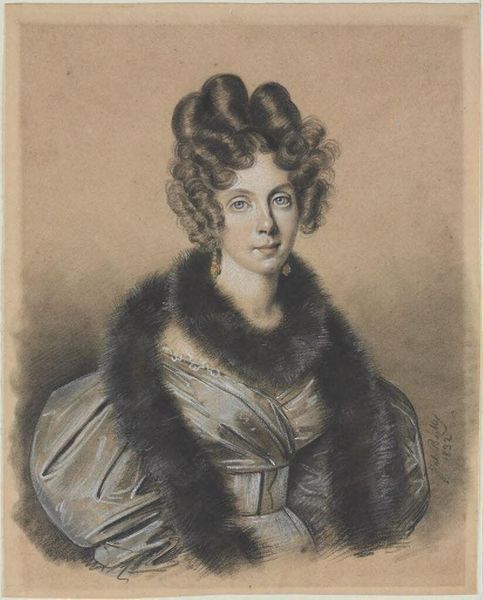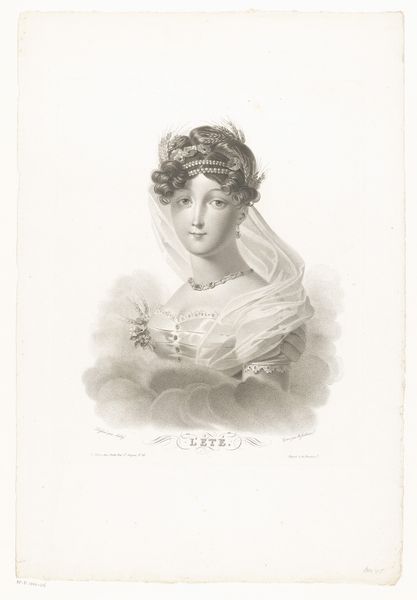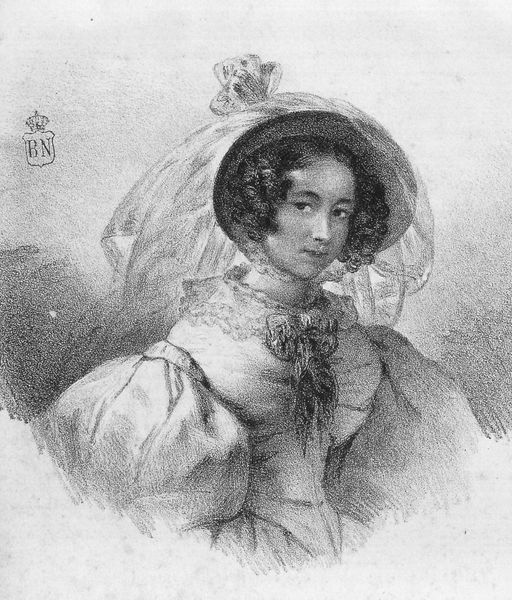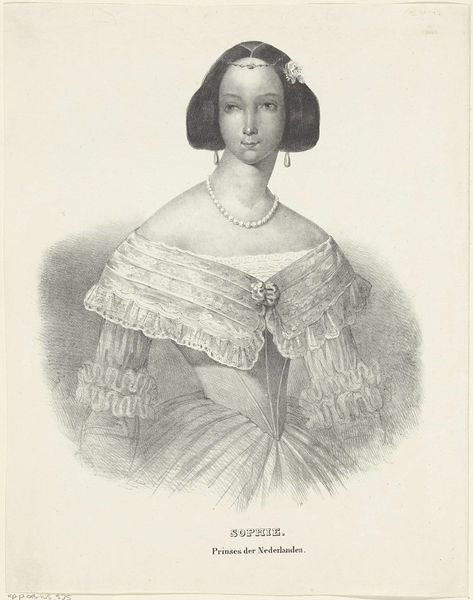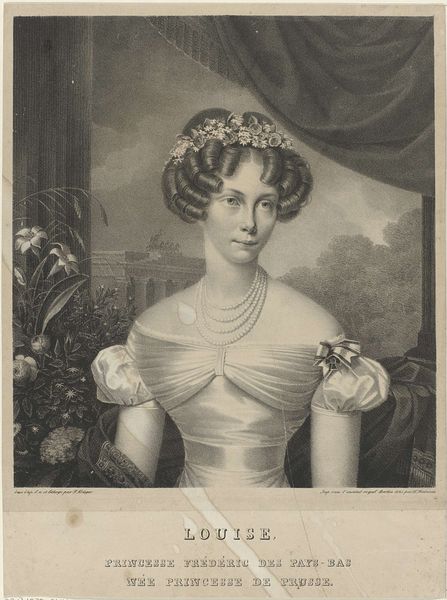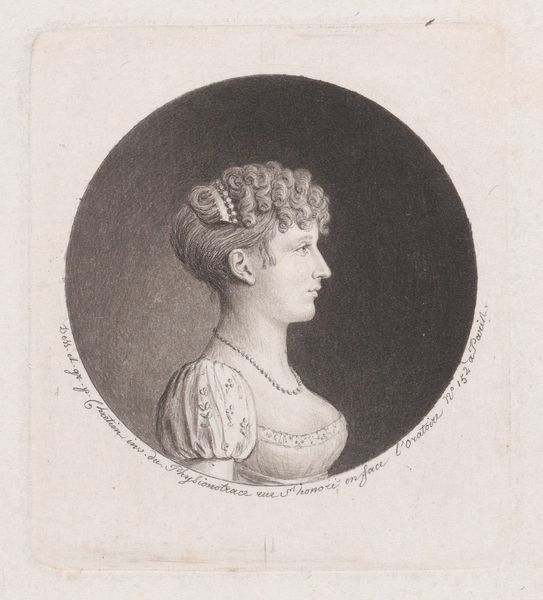
drawing, paper, pencil, graphite
#
portrait
#
drawing
#
paper
#
intimism
#
romanticism
#
pencil
#
graphite
#
genre-painting
#
modernism
Copyright: Public domain
Curator: Before us we have a graphite drawing from 1833, "Maria Kriehuber (Born Forstner), Kriehuber's Wife", made by Josef Kriehuber. Editor: The first thing I notice is the striking contrast between the delicate facial features and the almost cartoonish exaggeration of the sleeves! They appear incredibly inflated. Curator: Absolutely, and the drawing on paper highlights Kriehuber’s remarkable skill in capturing details. Beyond an exercise in virtuosity, this portrait hints at the burgeoning domestic sphere of the Biedermeier era. Editor: Indeed. Notice how her hairstyle and dress echo a butterfly’s wings. Butterflies are classic symbols of transformation and beauty, suggesting Maria’s own potential and social standing. The jewels reinforce this. Curator: It also reflects the influence of Romanticism with a growing sense of intimacy in portraiture, shifting the focus from grandiose statements to private moments. This drawing humanizes the sitter. What does it tell us about marital representation and status? The choice to depict his wife reveals evolving roles and ideas about marriage and the home within artistic circles. Editor: I agree; the symbolism deepens the personal story. It's almost a conversation, isn't it? The dress’s belt—that almost rectangular shape around her waist—seems to bisect the work. A possible constraint? What is being emphasized and what is being hidden from the public gaze? The Romantic style suggests this inner life. Curator: That visual split might represent Maria's roles: the wife versus her individuality. This image gains importance when understood in the broader context of marriage and societal expectations. Its impact lies not only in aesthetics, but as a record of a marriage and changing social mores. Editor: Looking closer, there's so much depth beneath the surface. You almost get a glimpse into her life beyond just the portrait itself. Curator: Yes, a great demonstration that genre-painting of private individuals offers more meaning and layers than is initially apparent.
Comments
No comments
Be the first to comment and join the conversation on the ultimate creative platform.
